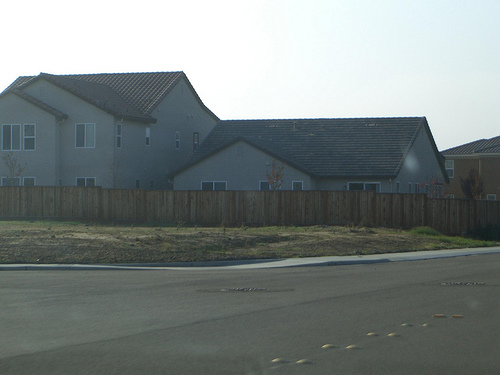In general, we like to keep things positive here at Shareable.net. But sometimes we have to remind ourselves of the problems we confront and the reasons why seeking solutions is so urgent. The mortgage crisis, which affected an estimated 8 million homes in 2009, is one of those problems. In the following photo essay, architect Mark Hogan documents how foreclosure is changing the landscape of exurban developments in Manteca, California, and surrounding areas. Fortunately, the death of exurban developments present opportunities for shareable development solutions: See Janelle Orsi's "Slow Homes Manifesto," Danielle Davis's "Happy Together?" and today's "Five Shareable Solutions to the Foreclosure Crisis," which explores what we can do with abandoned houses like the ones in these photographs.—Jeremy Adam Smith, Editor
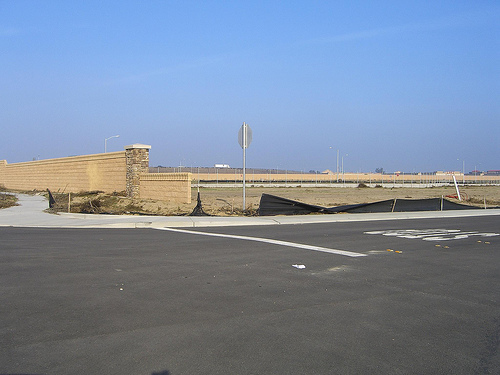
My girlfriend (now my wife) and I were heading to Yosemite for Thanksgiving weekend and noticed large sound barrier walls on the side of the freeway, but instead of shielding houses from the road, there were acres of empty streets. Not construction sites, just emptiness. Fascinated, we decided we would investigate on the way back from our weekend trip.
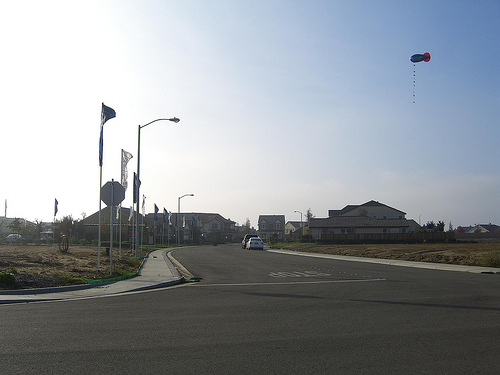
On our return trip, we exited the main road and drove to the entrance of the subdivision. We found that there were still sales signs and marketing material present, but it had taken on an air of desperation. On this fringe of exurbia, the bottom had completely dropped out of the real estate market just as construction was ramping up. In fact, between the market peak in 2006 and late 2008, the median sales price in the area had dropped from $455K to around $200K (as of this writing, the sales prices are still hovering around $200K). Nobody was building more houses because it was nearly impossible to sell the ones that had been completed.

Most of the unfinished neighborhoods butt up to inhabited houses, as the developments were planned in phases. Homeowners now look out on acres of barren land with wires left protruding out of junction boxes.
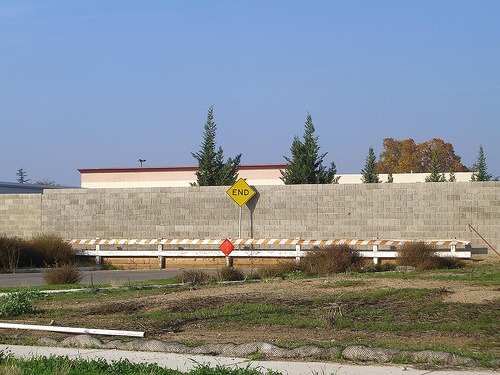
The site is ringed with sound and privacy walls and most of the infrastructure is intact, but there are many things that were clearly not quite finished when construction stopped. This seemed like a particularly fitting shot.

Nature was beginning to take over some of the streets, as plants began to take root in storm drains. Tumbleweeds literally blew across the road at times, giving the site an "old west meets the suburbs" feel.

Communal areas had been fenced off, though lawn maintenance was still taking place. When communities like this are not fully occupied, the homeowners association is often unable to pay for necessary work because there aren't enough fees coming in to cover costs. In this particular situation, it isn't clear what will happen, because the developer still owns the majority of the land but will not be able to sell it in the foreseeable future.
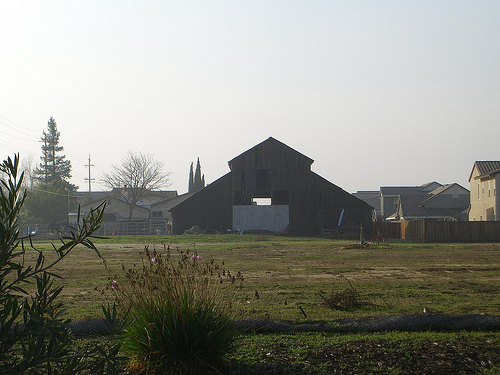
One of the most depressing parts of the collapse was realizing that this area had been productive farmland until the bulldozers moved in. The land has now been graded, the topsoil removed and asphalt laid—with no prospect of building houses for years.

The scale of the devastation caused by this type of land use is immense. In addition to building over farmland with bloated single-family houses, residents must rely on automobiles for all transportation needs, as there are no sidewalks on the main road that leads to the freeway.
In looking at these photos, it is important to question why this type of development existed in the first place. It is absurd that people were paying nearly half a million dollars to live 70 miles on a heavily congested freeway from the nearest major cities (Oakland or San Jose). Living more centrally, but in a smaller house or an apartment, seems like not only a better choice for the future of the planet but eminently preferable to spending four hours in traffic every day.
